DAY 21 - EGESKOV CASTLE - Saturday 14th May, 2022...
Today we were heading off to visit Egeskov Castle... This is the main result we have come to Funen Island... a visit to the water castle...
We planned to spend the whole day here, as there was so much to do and see and also lots of fun activities for the children..
Egeskov Castle was only about a ten minute drive from where we were staying so we get there just as the Castle opened for the day.
Admission wasn't that cheap to Egeskov Castle. Adults cost 210 Danish Krone which is equivalent to around $42 for each adult and around 119KK which is around $24 per child. Children under 4 are free so we fortunately didn't have to pay for the boys this visit...
Egeskov Castle was an island fortress, built over 600 years ago in the Southern Funen region of Denmark. It is one of the best preserved Renaissance water castle in Europe and the oldest example of a moated castle in Europe. It was built in 1554 and it is one of the mot well preserved castles in Denmark after the civil war took place from 1533 to `1536. The castle is surrounded by award winning manicured gardens, many of which were planted nealry 300 years ago. It also has several mazes, a playground and a series of museums as well as a variety of seasonal events including a popular Midsommar Festival.
This is the best time of the year to visit the castle as all the Spring flowers were out and added lots of colour to the park...
 |
| Arrival at Egeskov Castle |
 |
| Spring flowers were all in bloom.. so pretty... |
 |
| Beautiful pansies in all the pots... |
Once in the park, you have to walk through a wonderful children's playground to get to the various museums and the castle. They had a couple of big jumping pillows. One for the older children and one for the littlies. There was no way that Theo was going on the smaller pillow, he was very keen to be on the bigger jumping pillow with his Dad....
 |
| Peter and Theo jump together... |
 | |
| I think that Pete was having as much fun on it as Theo was.... |
Meanwhile Maria had taken Elliot over to the smaller Jumping Pillow and was helping him to bounce on it. He wasn't able to jump but he sure was having a lot of fun bouncing on it...
 |
| Elliot having a bounce with his Mum... |
 |
| One happy little boy... Loved being bounced... |
 |
| His face says it all... |
We had hired a little cart to pull the boys around it as the grounds were really quite large. Theo was very happy to ride and then take turns at pulling Elliot around also...
 |
| Theo was keen to have a little jump with Elliot also on the smaller pillow |
We spent a little more time, letting the boys choose some of the equipment that they wanted to play on. It was going to be hard tearing them around from the playground. They were having a ball...
 |
| Enjoying the ride.. |
 |
| Theo discovered a digger... He was in his element here.... |
 |
| Even Elliot seemed to enjoy his ride.... |
 |
| Theo racing his Dad around the track... |
 |
| A family out riding together... |
 |
| Poppy and Theo riding together.... |
 |
| Peter and Elliot race against Poppy and Theo... |
They had a blast and it was very hard to convince Theo that he needed to get off so that other's could also have a turn.
Egeskov has several mazes you can get lost in with the oldest maze having been established almost 300 years ago and is also rumored to be the world's largest maze of its kind. It was deigned by the poet Piet Hein. On average it takes a good 15 minutes to reach the center, but a lot longer if you don't have a good sense of direction..
We decided not to try it this visit as we were pretty sure it would take us a lot more than 15 minutes to get there and there was so much to see on our day here that we were going to be flat out seeing everything as it is.
After our turn on the bikes, we were all feeling a little hungry so decided to head in and have some lunch. We ordered hotdogs for lunch and whilst we were waiting for our food to come, we decided to check out the Grocery Store museum which was in the pavilion where we were having our lunch...
 |
| Off to have lunch |
 |
| Lunch time at Egeskov |
The Motorcycle exhibition was also housed in the pavilion in which we had our lunch and they had a huge display of old motorbikes which the boys found fascinating... Theo wanted to hope in and ride them and found it hard to understand that we were not able to go near them or touch them...
This exhitition was quite a large area of around 600m2 and had an extensive collection of motorycles, with some even hanging from the ceiling.
The exhibition featured 38 different makes of motorcycles with a total of 60 different motorcycles covering a period of around 80 years. They are presented chronologically which allows you to see how the machines have evolved over time.
 |
| A great motorcycle display at Egeskov Castle |
The display that Steve and I were really impressed with though was the Grocery Store museum. It is a 150m2 display area and has been created by the Grocers Aociation of Funen Museum Committee in co-operation with Egeskov.
 |
| Amazing grocery store display.. |
Although we didn't, you are able to purchase some of the goods in the shop to take home. It's a great place that shows how much our local supermarket have grown.
As we were heading to the main castle gardens we had to walk though another pavilion. This one housed their famous classic car museum...
This exhibition was founded in1967 and houses an outstanding collection of aircraft and motor vehicle. Among the many exhibits on display are eight aeroplanes and a helicopter, their ages spanning over a period of approximately 50 years.
This collection consistes or around 50 beautifully restored and mained cars from the end of the 19th century up to the beginning of the 1980's.
The Museum's oldest, drive-able car is the steam-driven vehicle dating from 1899 and you they also have Prince Bira of Siam's beautiful blue Bentley which was built in 1934.
In the old stable building, there is also a large exhibition entitled "Man and Mechanics from the period 1860 to 1910".
The gardens are as impressive as the castle's interiors, with over 120 different species of fushias, four hedge mazes. They are subdivided into various areas, and you can reach everything on very well maintained gravel paths. They also have some fine examples of the works of some of Denmark's most renowned Sculptors.
 |
| Beautiful old hanging trees in the gardens |
We had hired a wagon when we first arrived with the thought that we would be able to pull the boys around the park when their legs got a little tired. Theo was more interested in pulling the cart himself than actually riding in it. It kept him amused for half the day...
 |
| Theo had a lot of fun pulling this cart around... |
Some of the 12 kms of hedges in the park are over 270 years old and reach a height of 8 metres.
 |
| There are 12kms of hedge in the park... |
Egeskov Castle is built within a small lake that reaches a maximum depth of 5 metres. The structure is supported by oak poles, and legend has it that it took an entire forest of oaks to build it's foundations. The name Ëgeskov", in Danish, means "forest of oaks".
 |
| Stunning grounds and stunning views of the castle from every part of the park.. |
The gardens are doted with sculptures which adds to the numerous attractions of Egeskov Castle Park. The sculpture are by many different artists and are all for sale. For this reason, the sculptures on display are constantly changing, and there are always around fifty pieces scattered throughout the park. The actual decision of what to exhibit is the result of a close collaboration between Count Michael Alhefeldt (the current owners of Egeskov) and the Galleri5000 gallery, which then handles the sale of the works.
As we were coming around to check out the Renaissance Garden, we came across the eighteenth-century labyrinth, but unfortunately it was not accessible on this visit. We were to later find out that is permanently closed due to the desire to maintain the space: the fragile roots of the hedges would not hold up to the constant passage of visitor, which would compromise the roots and consequently the old maze itself.
It is also known as the old labyrinth, to distinguish it from the new (open) one in the play ground. It is positioned right near the resting garden and can't really be missed thanks to its classic intricate paths.
Its shape dates back to the 19th century when it was designed to amuse and entertain the family that resided in the castle.
 |
| The eighteenth-century labyrinth |
 |
| Enjoying our day wandering around the park at Egeskov Castle. |
On the oppoide ide o the castle from the entrance and rose garden lie the castle's beautiful Renaissance Garden. It has a strong impact and is joined to the castle itself through the disused drawbridge. The current layout of this garden dates back to a 1962 makeover by french gardener Ferdinan Duprat.
This space really does respect the classic canons of the Renaissance and has a central axis along with the fountains, coloured gravel that defines the design of the garden, boxwood trees cut into varied shapes such as pyramids, spirals and even squirrels.
 |
| The disused drawbridge across to the castle... |
 |
| Beautiful Renaissance Garden |
From here we checked out the lovely resting garden. Despite it's proximity to the castle, it is a little bit hidden. In fact, it is covered by the high hedge that shelters it. To reach it we had continued beyond the castle, skirting the small lake that remains on the left. Secluded and secret, this peaceful garden welcome you to take a bit of a break to just stop and rest and we loved it...
One of the most popular gardens at the Castle is the Fuchsia Gardens, but unfortunately we were here at the wrong time of the year to see it in all it's slender and glory.. Their Fuchsia Garden though contains the largest collection of fuchsias in all of Europe, about 75 different species. Obviously the owners of Egeskov must be particularly enchanted by this particular plant. I would love to come back and visit again when they were all flowering...
 |
| Stunning Tulip Spring Garden... |
 |
| The colours were spectacular |
 |
| One of my favourite.. |
Egeskov castle has an interesting history. It was an island fortress built in 1554 and is one of the most well preserved castles in Denmark. It is also one of the best preserved examples of a moated castle.
The most dramatic story in the castle's history is about an unfortunate maiden, Rigborg, who was seduced by a young nobleman and bore him a child out of wedlock. She was banished to the castle, and imprisoned by her father in a tower from 1599 to 1604. Maybe this where where the imagination from the fairy tale story of Rapunzel comes from. Who knows.... Maybe not as it was a German fairy tale written by the Grimm Brothers in the 1800s...
The castle as we see it today, was built by Frands Brockenhuus and was completed in 1554. A few years before this, he had married Anne Tinhuus who had taken over the original estate from her parents.
In the more than 466 years that have passed since it was built, there have been approximately 30 owners. Egeskov was sold to Henrik Bille in 1784 and his descendants have owned the castle ever since. In 1883 Julius Ahlefeldt-Laurvig-Billie moved into the castle and had it retored by Helgo Zettervall, a Swedish architect. Zettervall updated the castle into a model farm with its own dairy, power station and railway line to Kvaerndrup, the nearest town, and this formed the economic basis for the large modern farm that it is todayTo get to the castle, we had to walk across the bridge past the Gate House, which is situated next to the castle. Whilst walking past we noticed that they had a Fashion exhibition housed in there. It was rather a unique collection.Baroness Camilla purchases parts of a dress which once belonged to Marie-Antoinette, the "dress" is also found in the Gate House exhibition. The dres wa exhibited at Louvre in Paris in 1927 so being bale to see parts of a Marie-Antoinette dress here is something of a world-sensation.
 |
| Marie Antoinette's dress |
Pete was visiting the insides of the castle with us... although, he planned to just rush through it for a quick glance as he knew that Maria would need help entertaining the boys whilst Steve and I had a good look. Pete encouraged us to take our time, as we wouldn't be back in a hurry and he was pretty confident that they could amuse the boys back around the playground equipment.
 |
| Entrance to Egeskov Castle |
 | |
| Beautiful solid wooden front doors. |
Because this castle is still lived in by the current owners today, only some of the castle is open to viewing, including the restored Great Hall, which is now a venue for chamber muic concerts on 10 summer Sundays beginning in late June.
The inhabitants of this castle were great hunters, and on the first floor you get to view the hunting room with some of their mot prized tropies, including elephant tusks and the heads of tigers.
In fact the "Hunting Room" was the first room we explored on entering the castle. This room is probably one of the most famous of the whole castle. It is impossible to get confused about where you area as this room has a large series of hunting trophies hanging on the walls, a well as animal skins, such as that of a lion, fully on display. There is also no shortage of weapons, such as spears hanging on the right wall. The stuffed heads almost overshadow the decor in the hunting room. The room contains trophies bought back from British East Africa and the Congo - Tanzania, Uganda and Kenya of today.
This room was used by Count Gregers Ahlefeldt-Laurving-Bille, who lived from 1905 to 1985 as his personal study, and the animals on the walls are macabre souvenirs of his travels between 1930 and 1950. Mostly from Africa, these animals also earned him awards, such as the one for the extraordinary length (90cm) of the horns of the ampala he managed to kill. A record that has not yet been broken.
 |
| The Hunting Room |
From here we headed up the stairs, rather than do the second floor, we decided to go right to the top and work our way down..
 |
| Wonderful views of the gardens as we worked our way up the stairs.. |
 |
| Impressive copper door. |
Some really interesting exhibitions can be found up in the Loft... At the top of the stairs we came across the display of duelling weapons.
Duelliung originated among the nobles of south-west Europe, who developed a pecial set of rules for the procedure in the 1500s. Early duels were usually fought with swords, but over the course of the 1800s it became common to use pistols for duelling. Sets comprising a pair of identical weapons were soon developed, and you can see seeral examples of such weapons in this display at the castle.
On the introduction of absolutism in Denmark, the king was keen to use hi absolute power to ban duelling. He therefore appointed a commision tasked with ending the practice.
Two students fought the last known public duel in Denmark, which took place in Copenhagen in 1910. The duelists founght with sabres, and the confrontation came to an abrupt end when one of then participants was wounded in the thigh. Duels continued to be fought in secret in Denmark over the following years,
 |
| Massive amount of oak beam supporting the roof of the castle. |
The wooden Man lies peacefully beneath the tower spire. It is said that on account of this prophecy or legend, previous families of owners refused to celebrate Christmas at the Castle. The current count however duly feeds him every Advent with a bowl of rice pudding (the traditional Danish Christmas pudding) when the Christmas decorations are put up and they have safely celebrated Christmas in the decorated rooms below...
From here we made our way downstairs to the second floor. This entire floor is open to the public except for one room. This entire floor was formerly used as a granary, before Countess Nonni restored it to its former glory in 1975.
The largest room on this floor is the Banquet Hall. The left side of the Banquet Hall is decorated with large canvases that reproduce the portrait of Admiral Niels Juel and his wife Margrethe Ulfeldt, completed by the court painter King Frederick IV. The peculiarity of thee paintings is that, looking at them, it can seem that their eyes follow you around the room, a well a the tips of their shoes... Following the restoration in 1975, the Banqueting Hall is now in it original state.
 |
| Banquet Hall |
 |
| Beautiful restored ceiling beams |
The ceiling in the Great Hall is the original ceiling dating back to the Time Egeskov was built. One of the beam heads is marked "1554"- the year Egeskov was completed.
The first room we checked out from the Great Hall was the Admiral's Room. Today it is used as a guest room. It was renovated in 2021, when the walls were repainted in a colour that accentuate the classic furniture. You can clearly see how the count and his wife have made their own personal mark on the room - with full respect for the historical items it contains.
The Butler'sRoom is another one of those rooms used for overnight guests. This was probably the room originally used by the butler, who held ne of the most senior staff positions at the castle, hence its name. Every room at Egeskov has its own stove and the Butler's Room was no exception.
There were also some pretty impresive chandeliers hung throughout the Castle too.
The Maiden Cage or Jomfruburet (as it is called in Danish) was typically the term for a girl's room in the old days. The room has been newl decorated by Prince Alexandra and consists o a mixture of the Princess's and the Count's furniture. The Maiden's Cage is connected to the Captain'Room. The fine bed dates back to the 17th century and was used by Count Michael in his childhood.
The Captain's room is another room that has recently been refurnihed by Count Michael, the current owners of the Castle. It features a maritime theme and many of the paintings on the walls are of the famous frigate Jylland. The beds date back to 1648 and have always tod in Egekov. The room also serves as a guest room.
The Northern Tower is otherwise known as "Nonni's Room", named after Countess Nonni. This room contains furniture the countes ued during her time at Egeskov Castle. The bed is covered by a blanket hand-made by Countess Nonni herself. The furniture was originally a wedding present from Count Julius and Countess Jessie.
The front of the bed stands something that looks a little like a folding chair. It was actually designed to place luggage on when guests visited the castle...
 |
| "Nonni's Room" |
The saddest love tory o the whole castle wa staged in the Rigborg Room which is the room of the dollhoue and adjacent turret. It was here that a nble lady-in-waiting Maid Riborg (who lived between the 16th and 17th centuries) who fell in love with the young Frederik Rosenkrantz and was caught by her father in compromising circumstances where she fell pregnant and delivered a son. It was here that her father decided to lock her in the nearby tower for the rest of her life, but her mother petitioned King Chritian IV to free her. The King accepted the request and Maid Riborg spent the rest of her life in an estate in the center of the island of Fyn.
Today this room houses the unique doll's house "Titania's Palace"which Egeskov has received on loan from the LEGO Fund. Titania's Palace was built by a father Sir Neville Wilkinson for his daughter who wanted a fine houe for the small fairies she had seen in the garden.
ir Neville complied with her wish by laying out plans with a Dublin cabinet maker to create a structure for quite a lot of fairies. Titania's Palace is four feet long and has eighteen rooms. It is in 1:12 cale and conains over 3,000 miniature objects.
Titania's Palace was presented to the public for the first time in 1922 andno leer oerinage than Queen Mary of England was one of the invited guests. At that time, Sir Neville had devoted more than 15 years to completing the palace and had received a good deal of help with both the construction and the furnishing. Everyone from Irish craftsmen to members of noble and even royal families had contributed work and/or furnishings for the magnificent little palace.
Titania's Palace was exhibited near Dublin until 1967. Owing to the loss of its permanent home in Ireland the trustees of the estate decided to seel the Palace at auction. The winning bidder was Legoland of Denmark. It stayed on display at Legoland until 2007 when a load agreement was made to display Titania's Palace at Egeskov Castle, where we got to see it today...
 |
| The Deer Corridor |
From the Deer Corridor, we checked out the Victorian Room which represents the style of furnihing that was common towards the end of the 1800s. It was recontructed in 1977 with furniture, paintings, photograph, knick-knacks, curtains and carpets from the family'heritage. The room reflects the period from the middle to the end of the 19th century, a period characterised by a "confusion of styles".
The Victorian Room serves as an exhibition of a time when money was
plentiful, but the political situation was unstable. The room contains a
variety of photos of the Ahlefeldt family, which has called Egeskov
Castle home for nine generations.
We loved going through the castle, it was definitely worth the extra $10 or so to see it. We just wished we had a little more time to enjoy it, but we had to keep moving as we were fast running out of day and we hadn't got to visit most of the museums yet..
As we made our way back down the steps in the stairwell tower, it was not hard to gain an impresion of Egeskov as the fortress it was designed to be. The stairwell itelf is built separately to the rest of the building and provides acces to all storeys. You can see the embrasures from which bowmen were to defend Egeskov - an eventurality that actually never came to pass. The weapon on the walls were meant to be used if the castle was attacked.However, whilst we were checking out the castle, Pete and Maria and the boys, were exploring the little pond, walking in the tree tops and riding the bikes again...
 |
| Heading back to find Pete and Maria and the boys.. |
 |
| Theo enjoying the stepping stones.. |
Steve and I never made it up to the tree top walk, we had spent too much time in the castle and Pete and Theo had alteady done the walk. Still we have been on lots of tree top walks in Australia but we don't have real live castles in Australia like they do in Denmark...
 |
| Tree top walks at Egeskov Castle... |
We finally met up with Pete and Maria and the boys again at the pedal cars. Theo loved them and by now was very confidently riding one on his own...By the time, they had finished on the pedal cars, Pete and Maria decided to take the boys home. They wanted to get dinner ready so that we did not have a late night as the boys had been on the go all day and were a little tired...
 |
| Ice cream at Egeskov... |
As we had very limited time before the park closed we decided to check out the museum that would interest us the most first. This of course was the new camping musuem...
The museum takes up two large halls and contains an extensive collection of emergency vehicles and objects related to Falck's history. The have on display historical ambulances and an original rescue station as it looked in 1970s with the control centre, vehicles and crew quarters. The development of the Falck Museum, not only decribes Falck's history but also describes how Falck has become a part of the Danish and international community and will continue over the next few years.
It really was a rush job to get through and they were closing the doors at Steve came out. It was now time to head to the car park as we had less than half an hour before the main gates closed...This is a great place to come for a family day out, There is way too much to do and see in one day, but on the other hand there is plenty to keep each member of the family occupied and happy...
 |
| The big kid in me... |
Appartently there are quite a few peacock that wander the park, but it was only as we were leaving that we noticed them wandering around the grounds. Such beautiful birds with beautiful colours...
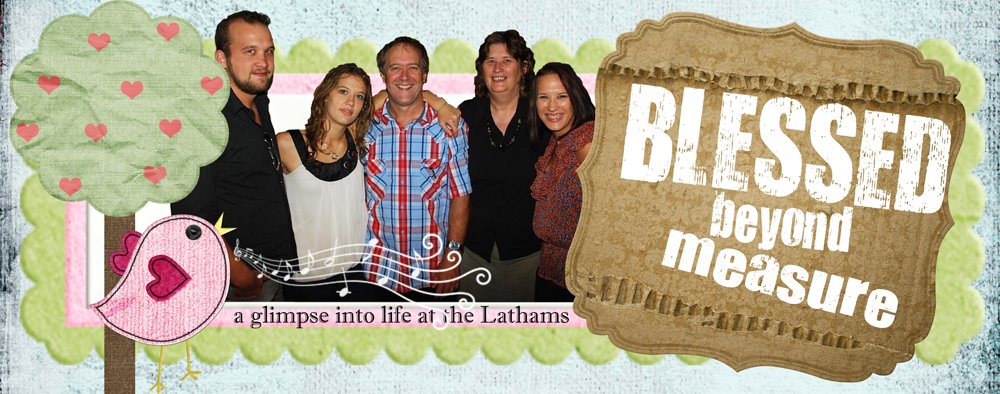














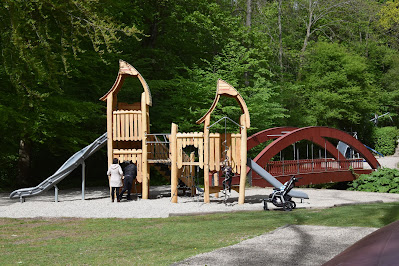







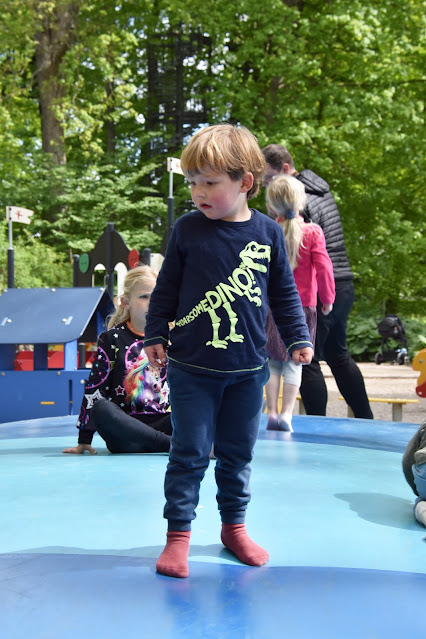













































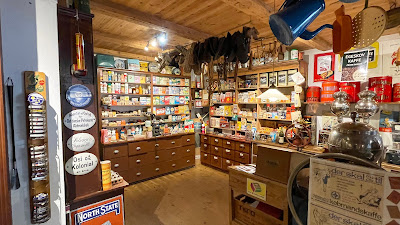











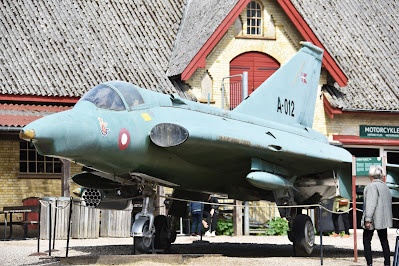



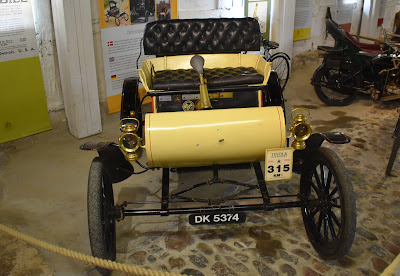





























































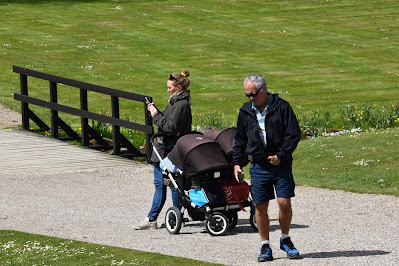








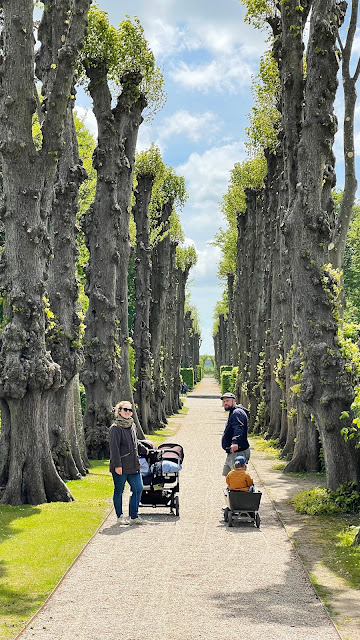





























































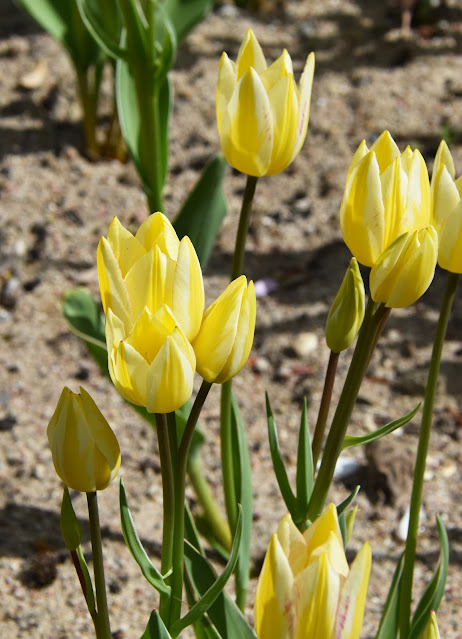

















































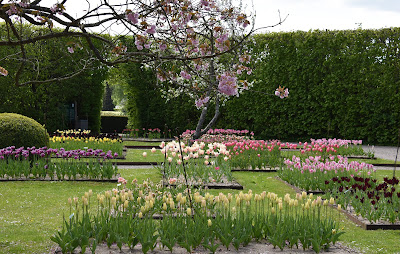














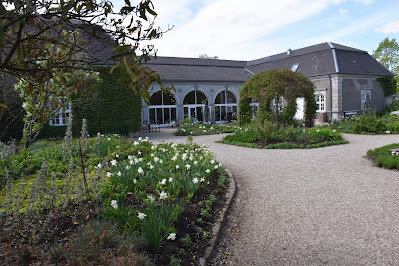


















































































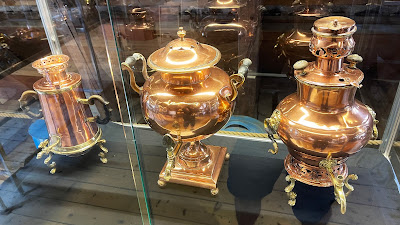


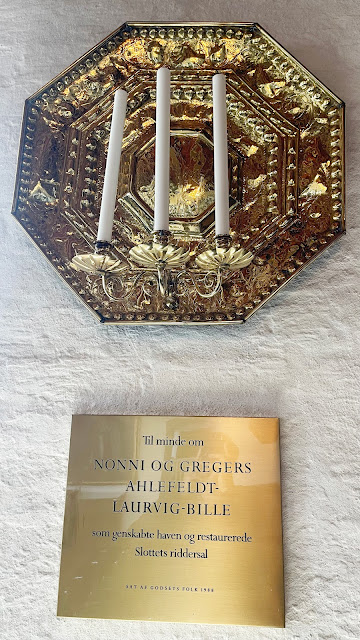









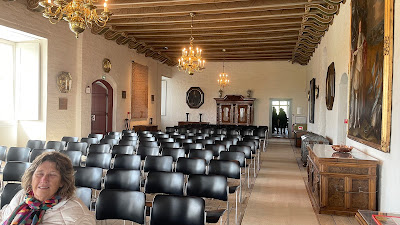











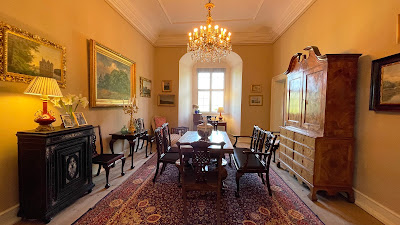

































































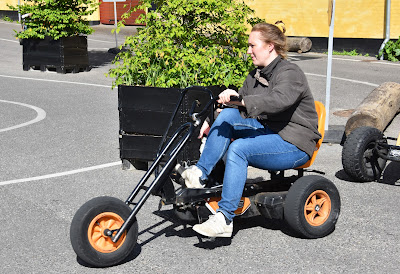














































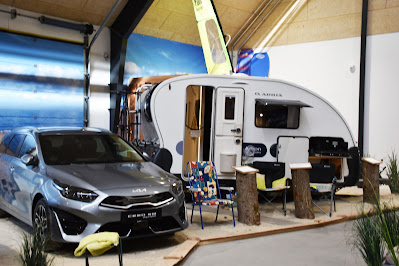












































0 comments:
Post a Comment